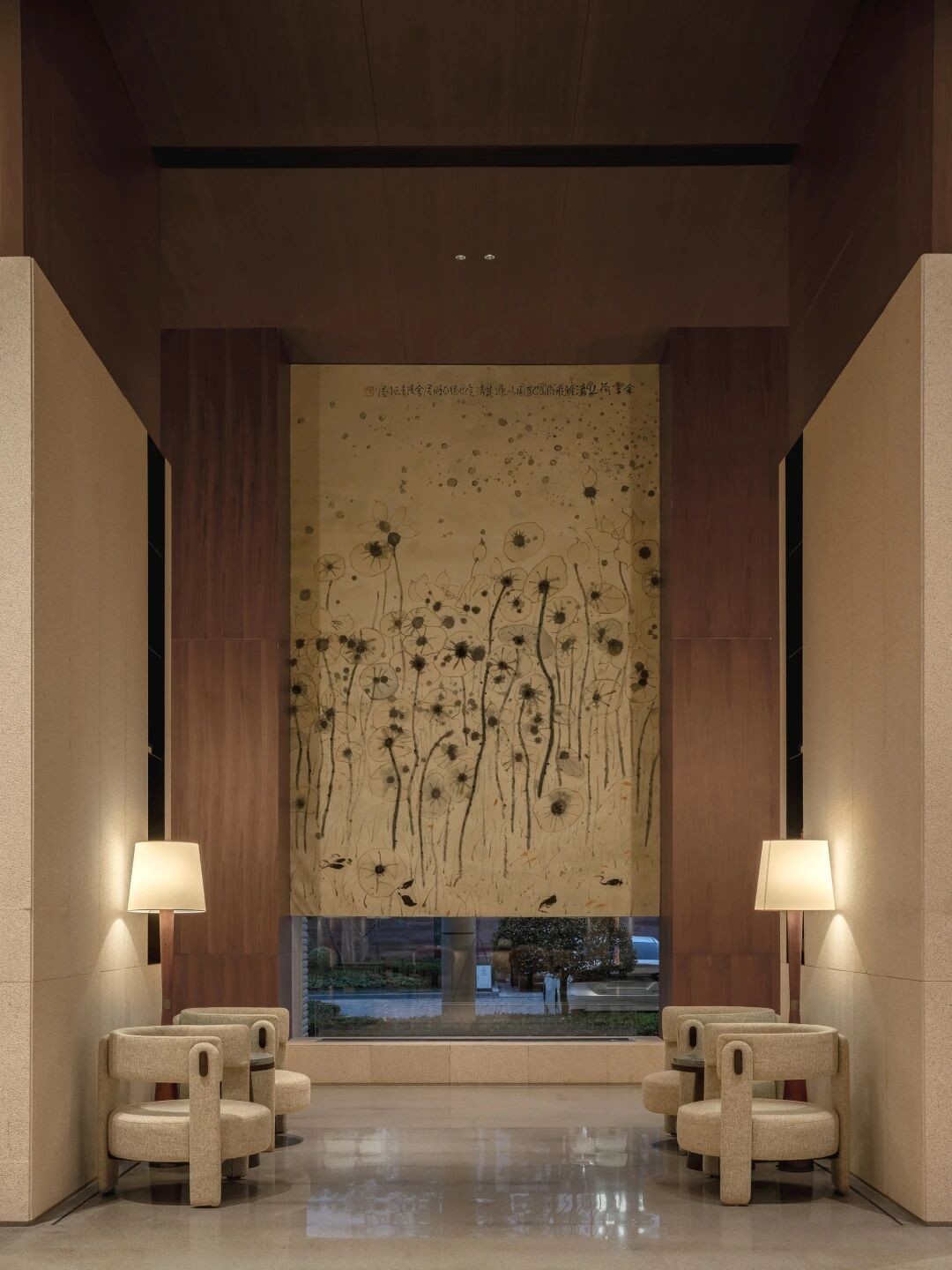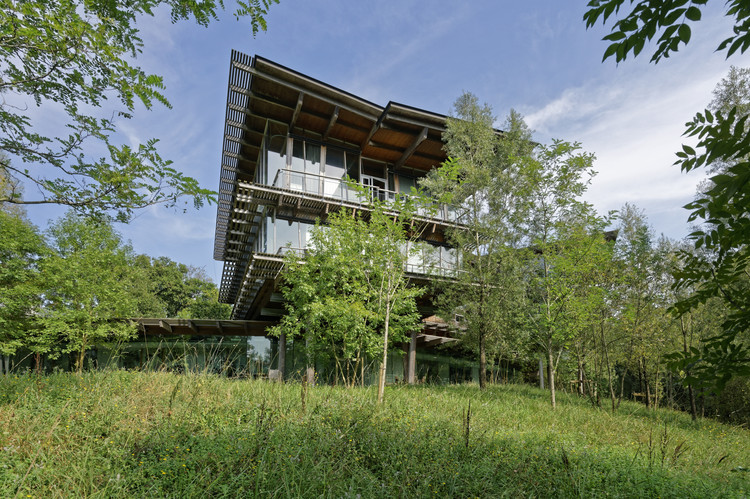Kindergarten Lotte Kavakava Architects
2013-03-26 01:00
架构师提供的文本描述。塔尔图市的目标是在新的公共建筑中实施高质量的现代建筑。新幼儿园位于塔尔图最破旧的地区之一(所谓的唐人街是前苏联驻军),正是这一政策的结果。
Text description provided by the architects. The city of Tartu has the goal of implementing high-quality modern architecture in new public buildings. The new kindergarten, which is located in one of the most dilapidated areas of Tartu (the so-callled Chinatown is a former Soviet military garrison), is a result of this policy.
幼儿园的布局-一个六角形的、星形的平面图-是为了避免长走廊和为建筑物创造一个有序的外围和街道空间而产生的。建筑位于地块的边缘,把南面作为一个游乐区。
The kindergarten´s layout – a six-cornered, star-shaped floor plan forced into a square – arose from the desire to avoid long corridors and to create an orderly outer perimeter and street space for the building. Building is situated on one edge of the plot and leaves the southern side free as a play area.
这座低街边建筑的外观有其内在的特点,它的一面墙有着小的彩色玻璃开口和一根竹篱笆,它本身的高度使幼儿园与外界产生了一定的隔阂。
External appearance of the low street-sided building has an inwardly character.Concrete side walls with small coloured glass openings and a bamboo fence of the height of the building itself make for some isolation of the kindergarten from the outside world.
环绕中央大厅的走廊是孩子们玩耍的地方。中央大厅比地面低约一米,产生了舞台的效果,再加上周围的“游乐”走廊,形成了一个单一的开放空间。这六个花瓣包括幼儿园家庭室、创意教室、厨房、餐厅和行政办公室。星型允许大量的光进入内部。亲密的庭院是在翅膀之间形成的。
The corridor winding around the central hall doubles as a play area for the children. The central hall is about a metre below ground level, creating the effect of a stage, and together with “play” corridor that surrounds it, it forms a single open space. The six petals contain kindergarten home rooms, creativity classrooms, kitchen, dining room and administrative offices. The star-shape allows lots of light to the interior. Intimate courtyards are formed between wings.
整个设计采用连续几何。平面图由相交在60度以下的线组成。同样的方式是在建筑核心的正面和天花板上发展三角形图案。
Continuous geometry throughout all design is used. Plan is formed by lines which intersect under 60 degrees with each other. Same way is developed triangle-pattern on facades and ceiling at the core of the building.
施工体系和材料:采用现浇混凝土为核心.它有一个令人印象深刻的热质量和需要冷却在春季和初夏减少到最低。这座建筑的自然通风与机械通风相结合。所有房间都有充足的自然光。儿童日间朝南,朝向露天游乐场。预制混凝土用于三角窗墙-这里需要很高的精度,因为三角形玻璃板是直接(没有框架)插入到混凝土墙中的。
Construction system and materials: Cast-in-place concrete is used for the core. It has a impressive amount of thermal mass and need for cooling in spring and early summer is reduced to minimal. Natural ventilation is combined with the mechanical one in this building. All rooms have plenty of natural light. Children day-rooms face south towards an open air play area. Prefabricated concrete is used for a walls with triangular windows – great accuracy was needed here because triangular glass panes were inserted directly (without frames) into the concrete wall.
 举报
举报
别默默的看了,快登录帮我评论一下吧!:)
注册
登录
更多评论
相关文章
-

描边风设计中,最容易犯的8种问题分析
2018年走过了四分之一,LOGO设计趋势也清晰了LOGO设计
-

描边风设计中,最容易犯的8种问题分析
2018年走过了四分之一,LOGO设计趋势也清晰了LOGO设计
-

描边风设计中,最容易犯的8种问题分析
2018年走过了四分之一,LOGO设计趋势也清晰了LOGO设计




































































.jpg)







